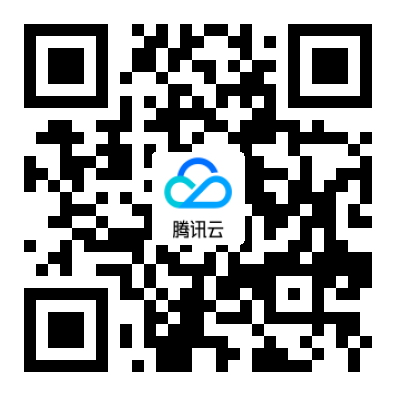Python爬取猫眼「碟中谍」全部评论
原创Awesome_Tang
修改于 2018-09-17 03:54:44
修改于 2018-09-17 03:54:44
代码可运行
运行总次数:2
代码可运行

实现目标
- 昨天晚上看完碟中谍后,有点小激动,然后就有了这片文章。
- 我们将猫眼上碟中谍的全部评论保存下来,用于后期分析~
- 总共评论3W条左右。
逻辑梳理
- 猫眼PC网页只能查看热门评论,只有在手机端页面才能查看全部评论。我们用chrome手机模式打开碟中谍6的页面,然后找到了全部评论入口:

- 当我们将评论页面向上拖,后台请求中变看到了我们想要的接口地址:
http://m.maoyan.com/mmdb/comments/movie/341737.json?_v_=yes&offset=15&startTime=2018-09-02%2013%3A33%3A14
- 请求地址中的参数:
offset:偏移量
startTime:查询起始时间
还有一个V不知道啥意思,不过没啥影响

- 其实正常来说到这儿就差不多了,按照以往的套路循环传入offset参数就好了,不过当我爬到第67页的时候,就已经不返回值了,为啥是67,67$\times$15=1005,猫眼应该是控制了每个startTime只能往前取1000条评论,所以只能换个思路,将每页最早一条评论的时间作为startTime传入,offset固定15就好了。
- 最后效果

代码部分
- Talk is cheap. Show me the code.
# -*- coding:utf-8 -*-
import requests
import json
from datetime import datetime
import time
from tqdm import tqdm
from random import random
class MaoYan():
"""docstring for ClassName"""
def __init__(self, movie_id):
print '*******MaoYan_spider******'
print 'Author : Awesome_Tang'
print 'Date : 2018-09-01'
print 'Version: Python2.7'
print '**************************\n'
self.movie_id = movie_id
self.starttime = datetime.now().strftime('%Y-%m-%d %H:%M:%S')
self.starturl = 'http://m.maoyan.com/mmdb/comments/movie/%s.json?_v_=yes&offset=0&startTime=%s'%(movie_id,self.starttime)
self.headers = {'Mozilla/5.0 (iPhone; CPU iPhone OS 11_0 like Mac OS X) AppleWebKit/604.1.38 (KHTML, like Gecko) Version/11.0 Mobile/15A372 Safari/604.1'}
def GetCommentNum(self):
'''
查询总评论数
用于建立循环
'''
response = requests.get(self.starturl,headers = self.headers)
text = response.json()
num = text['total']
print '>>>>查询时间:%s\n>>>>评论数量:%s'%(self.starttime,num)
return num
def FormatUrl(self,starttime):
url = 'http://m.maoyan.com/mmdb/comments/movie/%s.json?_v_=yes&offset=30&startTime=%s'%(self.movie_id,starttime)
return url
def QueryComent(self,url):
'''
评论请求部分
nickName:用户昵称
cityName:城市
content:评论内容
score:用户评分🌟🌟
startTime:评论时间,每次取最早的时间传入下次请求
'''
try:
response = requests.get(url, headers = self.headers, timeout = 5)
if response.status_code == 200:
attrs = ''
comments = response.json()['cmts']
for index in range(15):
try:
nickName = comments[index]['nickName']
cityName = comments[index]['cityName']
content = comments[index]['content']
score = comments[index]['score']
startTime = comments[index]['startTime']
param = '%s|%s|%s|%s|%s\n'%(startTime,nickName,cityName,score,content)
attrs = attrs+param
except KeyError as e:
attrs = ''
return attrs ,startTime, True
else:
print '>>>>查询过于频繁,请休息几分钟♨️♨️'
return response.content.encode('utf-8'),'',False
except BaseException as e:
print '>>>>请检查网络...🔗🔗\n'
print e.message
return e.message,'',False
def SaveComent(self):
'''
保存评论到txt文件
如果请求成功保存,失败sleep100秒
tqdm用于实现进度条
'''
num = self.GetCommentNum()
pages = num/15
with open('comment.txt','a+') as f:
for i in tqdm(range(pages)):
if i == 0:
starttime = self.starttime
url = self.FormatUrl(starttime)
attrs,starttime,IsOk = self.QueryComent(url)
else:
url = self.FormatUrl(starttime)
attrs,starttime,IsOk = self.QueryComent(url)
if IsOk:
f.write(attrs.encode('utf-8'))
else:
while True:
time.sleep(100)
attrs,starttime,IsOk = self.QueryComent(url)
if IsOk:
f.write(attrs.encode('utf-8'))
break
else:
continue
print '>>>>评论保存完毕...'
if __name__ == '__main__':
p = MaoYan('341737')
p.SaveComent()最后
评论算保存完了,近期会再做一个关于此次数据的可视化分析。另外阿汤哥真心太帅了,全程打肾上腺素,各位还没去看的赶紧~
原创声明:本文系作者授权腾讯云开发者社区发表,未经许可,不得转载。
如有侵权,请联系 cloudcommunity@tencent.com 删除。
原创声明:本文系作者授权腾讯云开发者社区发表,未经许可,不得转载。
如有侵权,请联系 cloudcommunity@tencent.com 删除。
评论
登录后参与评论
真实的谎言回复Zoctopus
mark了,很好的教程
mark了,很好的教程
回复回复点赞举报
初入大前端回复Zoctopus
这个公式还是有些难理解,但还好看代码看懂了,谢谢
这个公式还是有些难理解,但还好看代码看懂了,谢谢
回复回复点赞举报
推荐阅读
推荐阅读
相关推荐
Python爬取猫眼「碟中谍」全部评论
更多 >目录
交个朋友
加入腾讯云官网粉丝站
蹲全网底价单品 享第一手活动信息



















